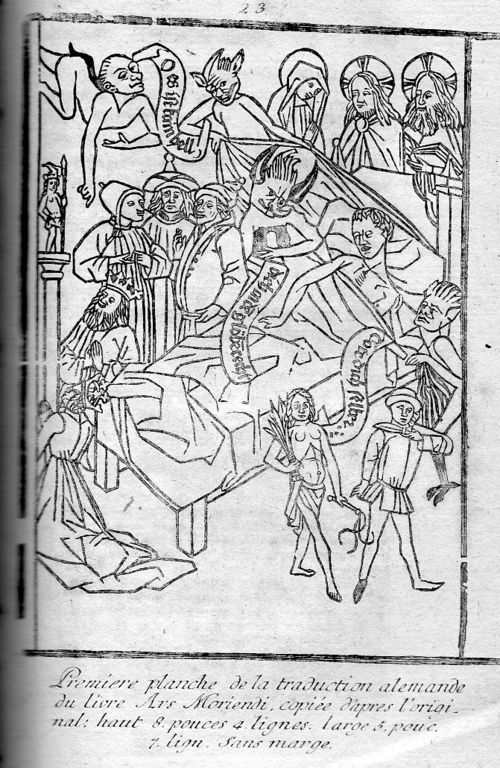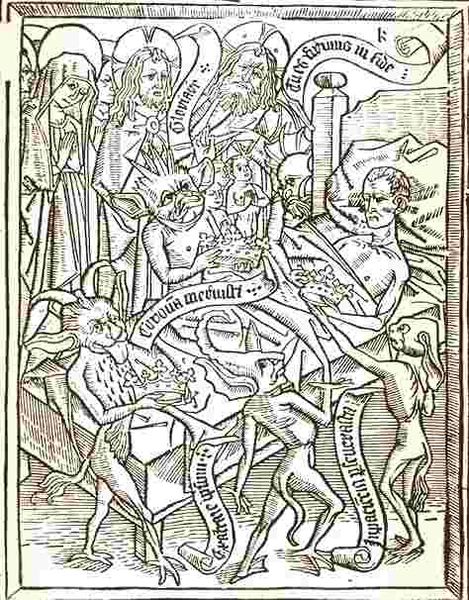JF Ptak Science Books Post 2380
[Woodcut, printed in 1771, from an ealier woodcut of the late 15th century; 6x4 inches. This version available from our Blog Bookstore.]
The lare Medieval/early Renaissance Tractatus artis bene moriendi was a work book of the dead--rather, a book for those about to be dead, an instructional for the process of dying the good death along the (loose) order of the Tibetan Bardo Thodol and the Egyptian book of the dead. The Ars was written in the early the 15th century (some sources say 1415) and began appearing in some of the earliest illustrated printed books by about 1460--it was a wildly popular/necessary book, going through some 100 editions by 15001.
The books basically readied the dying for death, for a holy death, a death filled with high possibilities of a rewarding afterlife, for dying in the good graces of Christ and the christian ideals. The images were such that non-readers could understand them--and this is still pretty much the case.
Many of the variants of this work include a dozen or more woodblock illustrations, an example of which is found above. We see the soon-to-be-departed at the very last instant before death, surrounded by all manner of distractions and entertainments aimed at luring the person to an earthly- rather than holy-demise. Demons, conjurers, makers of greed, and devils surround his bed in temptation, all while the Virgin Mary, Christ and the creator look down upon the besieged from behind the top of the bed.
Death was not an uncommon visitor in Europe in the early/mid 15th century, and perhaps this book served some in the way it taught people how to die a noble and religious death, especially when clergy may not have been so available.
(The blog offers a version of this print, not nearly as old as the original, but with some sort of substantial age on it--it was printed in 1771 in Leipzig, and published in Heinecken's Idee Generale d'une Collection Complette d'Estampes, and it is an attractive print suggestive of a greater age.
Here's another example, this time the dying man is beign attacked by agents of pride and greed. The images are genuinely upsetting--scary even.
1. English editions/variation of this work include The Waye of Dying Well and The Sicke Mannes Salve, and then in 1650 the Holy Living and Holy Dying.





Comments